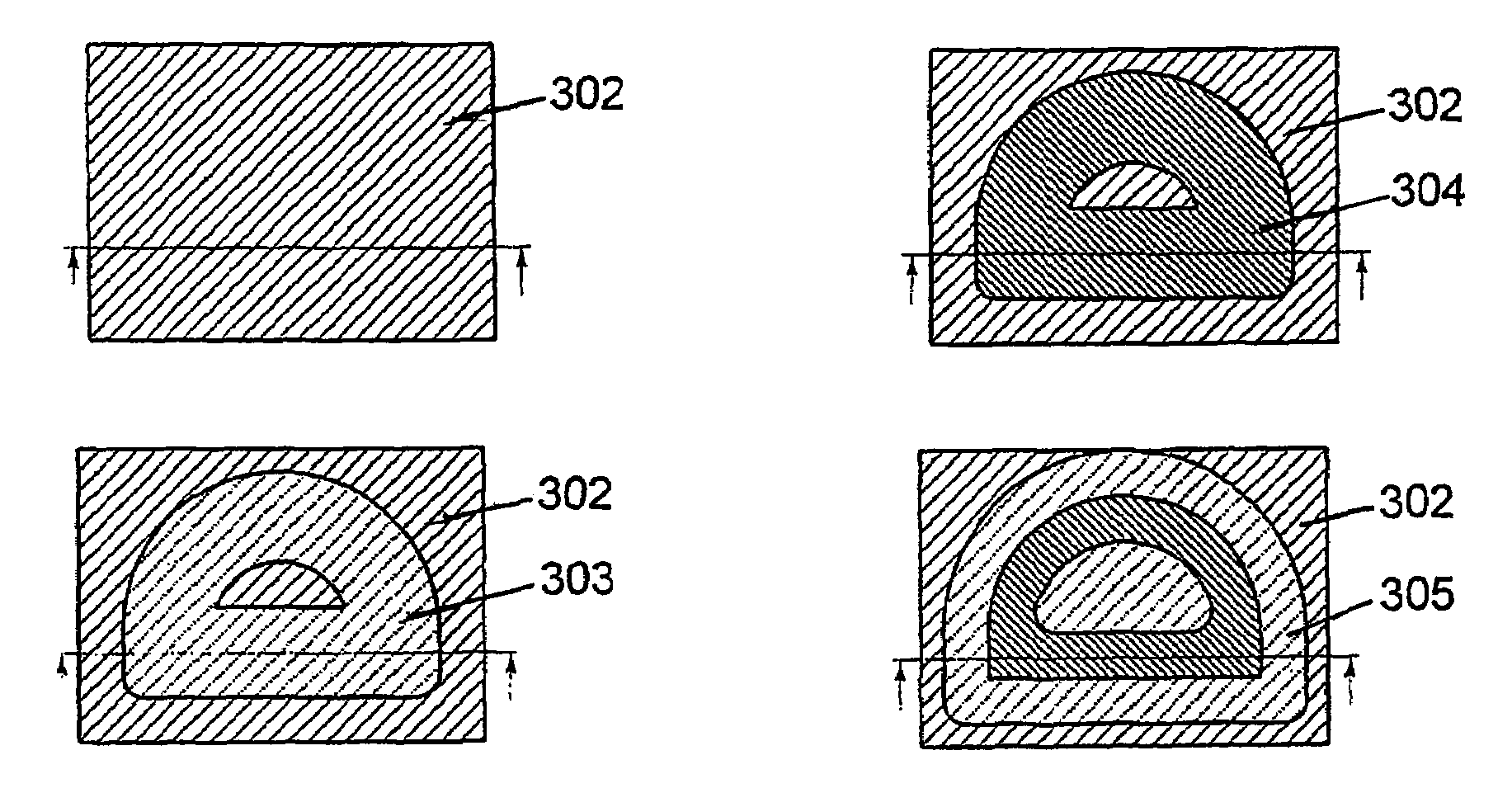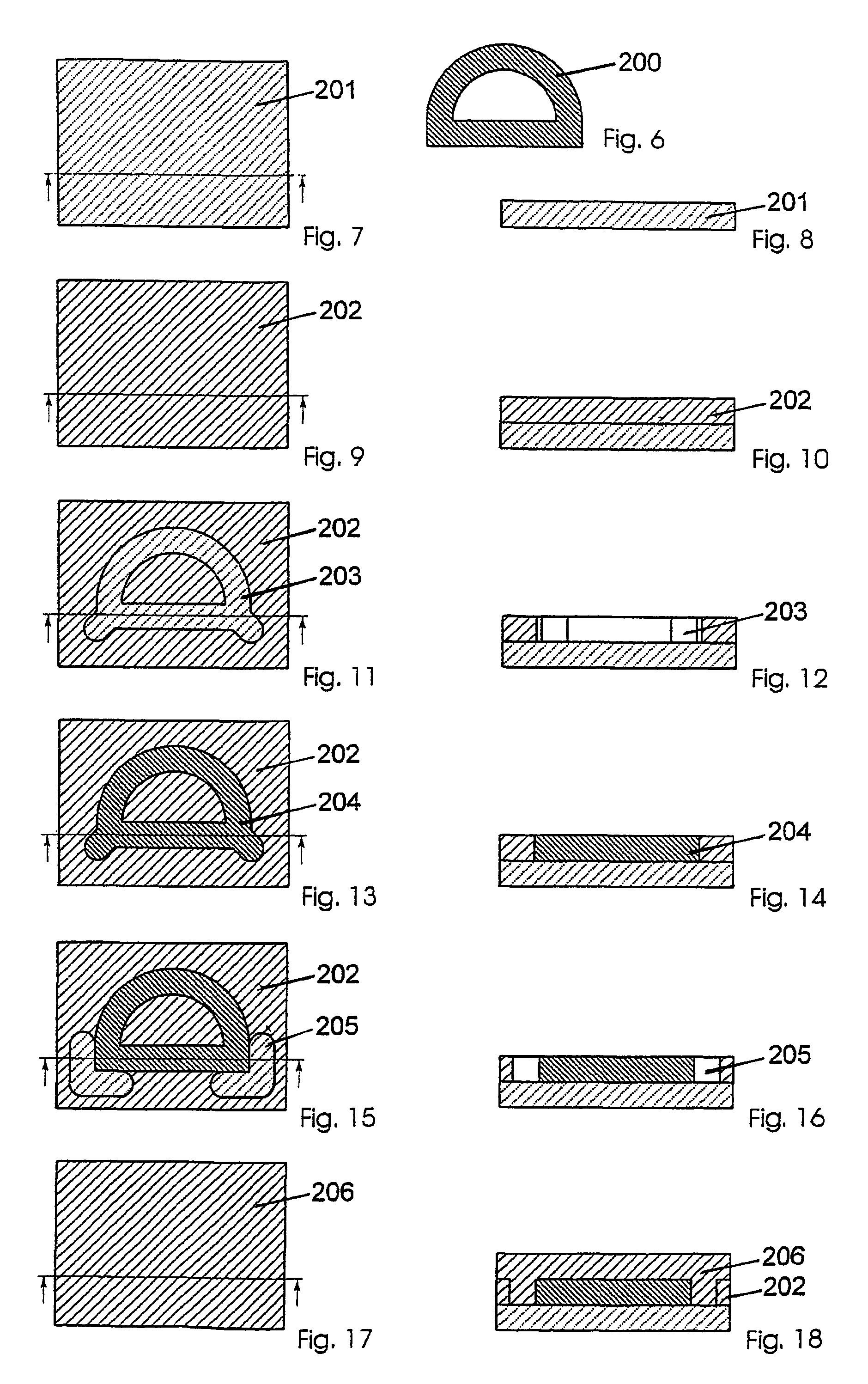Method for producing a part and device for carrying out this method
a technology of generative manufacturing and parts, applied in the direction of auxillary shaping apparatus, electron beam welding apparatus, wood working apparatus, etc., can solve the problems of poor surface quality, insufficient accuracy, and demand for mechanical finishing operation, and achieve the effect of reducing tool wear, facilitating machining, and reducing the wear of tools
- Summary
- Abstract
- Description
- Claims
- Application Information
AI Technical Summary
Benefits of technology
Problems solved by technology
Method used
Image
Examples
Embodiment Construction
[0115]FIGS. 1 to 5 depict the production of a part 108 according to a first preferred embodiment. A support material 102 is applied to a substrate 101 or a preceding layer. The support material 102 can be applied according to the contour of the desired part 108 in a defined way or in a flat form with subsequent production of the recesses 103 needed. The recess 103 may be larger than the contour of the desired part 108 if a finishing operation for the layer on the construction material 107 is to be carried out. In a further step, the recess 103 is filled with a construction material 107. To this end a supply container 105, which contains the construction material 104, is guided in the direction of arrow 106 over the recess 103 existing in the support material 102. In a further step, the construction material 107 is molten in itself and optionally molten (connected by melt metallurgy) with the layer positioned thereunder with a laser 109, which moves e.g. in the direction of arrow 110...
PUM
| Property | Measurement | Unit |
|---|---|---|
| Time | aaaaa | aaaaa |
| Time | aaaaa | aaaaa |
| Time | aaaaa | aaaaa |
Abstract
Description
Claims
Application Information
 Login to View More
Login to View More - R&D
- Intellectual Property
- Life Sciences
- Materials
- Tech Scout
- Unparalleled Data Quality
- Higher Quality Content
- 60% Fewer Hallucinations
Browse by: Latest US Patents, China's latest patents, Technical Efficacy Thesaurus, Application Domain, Technology Topic, Popular Technical Reports.
© 2025 PatSnap. All rights reserved.Legal|Privacy policy|Modern Slavery Act Transparency Statement|Sitemap|About US| Contact US: help@patsnap.com



